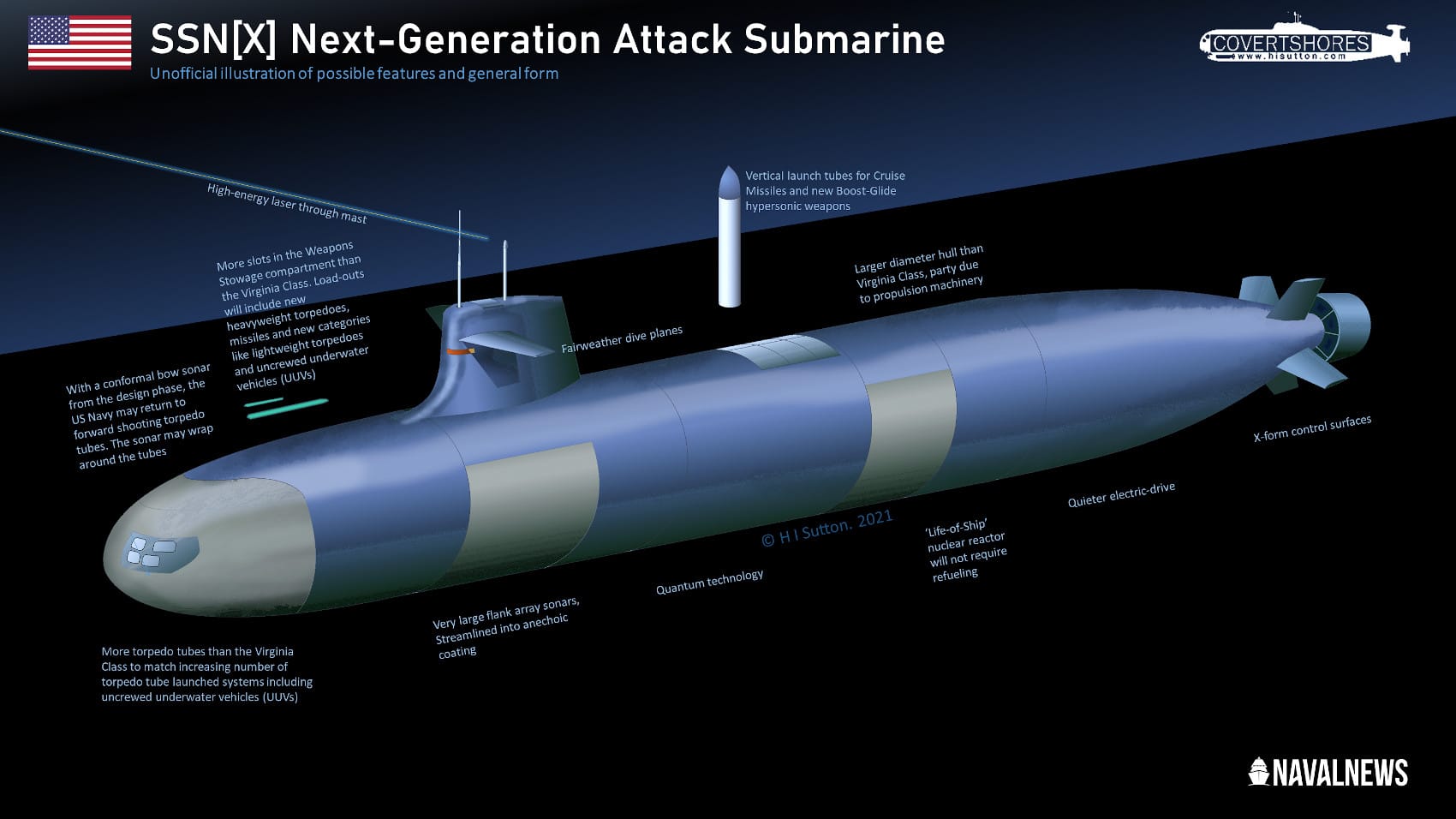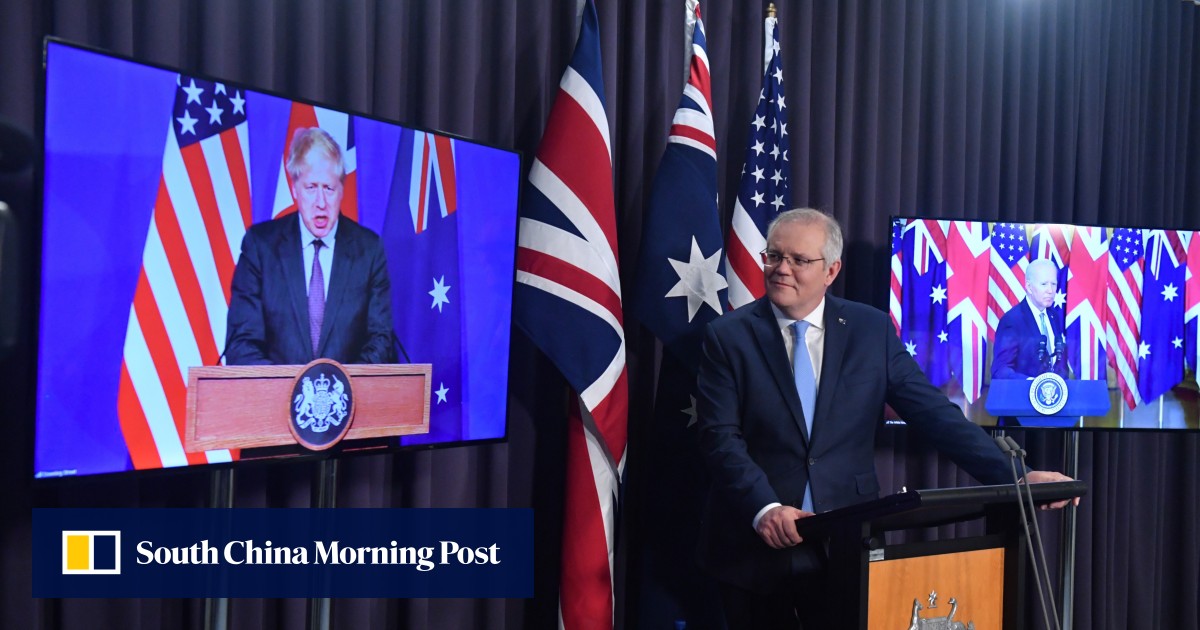This is an article I have written on
Canadian Hybrid Submarine Designs, but has never been published. It is an opinion piece only and not for publication. Forum members are encouraged to read and give their own opinions-good or bad. Cheers!
A Canadian Hybrid Submarine Design
A Case For The “Small Modular/Micro Reactor (SM/MR)”
Nuclear propulsion is ideal for long distances and extended under-ice missions that are unique to Canada. Off-the-shelf AIP submarine designs that are direct replacements to the
Victoria class, such as the French Barracuda Block 1A class being designed for Australia or the Japanese Soyru 29SS class AIP design with Lithium-Ion Battery (LIB) technologies or the German Type 216 submarine are interesting alternatives that extend the endurance of diesel submarines. But none of these options completely satisfactory Canadian submarine needs. The dominant paradigm for a modern nuclear-powered submarine is a steam generating reactor driving turbines that directly drive the propulsor or propeller. The French Shortfin Barracuda Block 1A being built for Australia offers a
limited hybrid design that enables electric propulsion for low-speed cruising and turbo-mechanical drives at higher speeds, but is not competitive against nuclear-steam turbo-mechanical for blue water or arctic operations.
Outrageous cost estimates for nuclear-powered submarines tend to cloud Canadian thinking for recapitalizing its submarine fleet. DND’s proposal for extending the lives of its four Victoria class conventional submarines for another 6-18 years appears a
comparative bargain. But is there a better, more affordable and collaborative way?
The first challenge to costs is volume. Development, or non-recurring engineering costs make up a sizable percentage of the cost of any submarine fleet. If an existing, proven, hull can be slightly modified, it would be a major cost saver. That will require DND to end the habit of imposing onerous modifications that inevitably cause costs to explode. Another route to substantial cost savings is to share the development costs of major items like the propulsion and power plant with partners. Technologies like
air independent propulsion (AIP) or LIBs that extend the endurance of diesel submarines but introduce major compromises in performance. But neither of these options are satisfactory for Canadian naval requirements. With or without AIP, diesel submarines are far too “short legged” – they are dependent on logistically complex supplies such as liquid oxygen that deplete quickly; and the engines are mechanically complex. These are distinct disadvantages given the long distances and extended under-ice missions that are unique to Canada.
Whenever a diesel “snorts”, it leaves a very visible plume of smoke and heat that is readily detectable. Then there is the deafening noise of diesels, even when equipped with the latest quieting technologies. Thus, nuclear propulsion in some form is still ideal for Canadian requirements. Due to their endurance, nuclear submarines tend to be blue water, ocean-going vessels. Los-Angeles and Virginia class fast attack submarines displace around 8,000 tons. French Barracuda SSNs are about 5,300 tons, UK’s Astutes are over 7,000 tons, while the Shortfin Barracuda (conventional version) is about 4-5,000 tons. Compared to the Victoria class SSKs at about 2,500 tons, they are large vessels. A fleet nuclear submarine (8,000+ ton range) is neither necessary nor ideal for Canadian waters. A smaller nuclear-powered attack submarine that is large enough to support a good-sized crew and carry unmanned systems would be ideal for Canada, but presently, none is available. Canadian submarines are most likely to operate in Canadian waters especially in the Arctic, Pacific and Atlantic coasts up to the relatively shallow continental shelf. A Hybrid submarine would offer a novel solution. A fleet of hybrid nuclear submarines (5,000+ ton range) would be ideal for Canada. But building such a submarine with this kind of displacement with a 60 day endurance, transit speeds of 20 knots, burst speeds above 30 knots, and state of the art signature management technologies and support for unmanned platforms would be cost prohibitive for all but the largest Navies. Canada, does however, have an excellent emerging technology that can contribute to a joint venture from say the USA, France Germany or Japan for a new hybrid nuclear/AIP submarine design such as the Canadian Small Modular Reactor (SMR) or Small Micro-Modular Reactors (SMMRs) now being developed right here in Canada by Canadian companies. These SMR/SMMR reactors would be just about ideal for a smaller nuclear-powered/AIP submarine. A nuclear, battery-electric (LIB) hybrid is a potentially attractive alternative to the dominant nuclear turbo mechanical drive. One or more of these SMRs of say 20-30 MW of power each could be used to generate power to drive generators to constantly top-up LIBs. The ability to completely shut down a reactor module, and tightly match energy demand with supply, reduces the amount of
excess waste (heat dumped). Machinery noise from the nuclear turbo-mechanical generator can be more readily controlled if the system is operated at (and optimized for a relatively narrow power band) with no requirements for rapid throttling as with a turbo-mechanical drive. Electricity generated can be stored in state-of-the-art LIBs. Electric power from batteries driving propulsors offer the prospect of
extremely low radiated noise and yet maintain a high degree of “throttle-ability” with only limited compromises in sustained high speed cruising that would be a function of the nuclear plant’s power ramp and maximum output. Making the propulsor jets steerable and eliminating control fins is an additional benefit in minimizing the active signature. One of the biggest advantages of SMRs/SMMRs in a modern Hybrid AIP submarine design is that “snorting” of the submarine would be a thing of the past as energy would be continually stored in much improved LIBs for much better under ice endurance. This would also open up potential lucrative markets for this Canadian SMR nuclear technology. The Canadian developed SMR/SMMR reactor systems could be made small enough and inexpensive enough to make it accessible and cost-effective for smaller nuclear submarines.
Canada is uniquely positioned to quickly develop the SMR/SMMR technology through National/International companies such as: The Atomic Energy of Canada Limited (AECL); Global First Power -an Ultra Safe Nuclear Corporation (USNC)/Ontario Power Generation collaboration; Chalk River Nuclear Labratories (CRL) and UK based Moltex Energy. So, who might partner with Canada? The US, UK, France, Germany, Japan and Australia are all great potential partners. Each nation’s existing or planned submarine designs are potentially good candidates. In fact, the French are already working on a
new hybrid Barracuda variant for Australia. A collaboration with Japan, which has begun work on its next generation of electric Soryu class submarines, can contribute certain technologies, like LIBs in which they excel. SMRs/SMMRs would also be an excellent and clean source of power for future surface vessels as well.
Conclusion:
If the Canadian government contributed a major portion of the development costs of Small Modular Reactors or Small Micro Modular Reactor power plants for hybrid submarines, it can be used to negotiate a better price on the subs, perhaps less than 1B CAD per sub (substantially lower than any standard nuclear sub being built today world-wide). It will also be the only small naval reactor power plant available that can potentially be used on surface vessels like the Canadian Surface Combatant (CSC) or even civilian vessels, reducing Green House Gas (GHG) emissions from shipping and potentially opening up lucrative markets for Canadian nuclear technology. The question is, can such a unique hybrid sub design be built in quantity (more than 20) for less than 1B CAD a copy? The technology of the SMR/SMMR reactors is here now, and has been constantly up-graded and miniaturized over the past several decades and is on the brink of success. An up-dated NSS Plan with this innovative hybrid submarine design would be a game-changer for Canada. Faith in this program by Canadians and the government will forever banish the ghosts of the DeHavilland Arrow fiasco. It will be challenging, but Canadian ingenuity is up to it.
Canada’s Small Modular Reactor Action Plan
Small Modular Reactors
Small modular reactors - Canadian Nuclear Safety Commission




